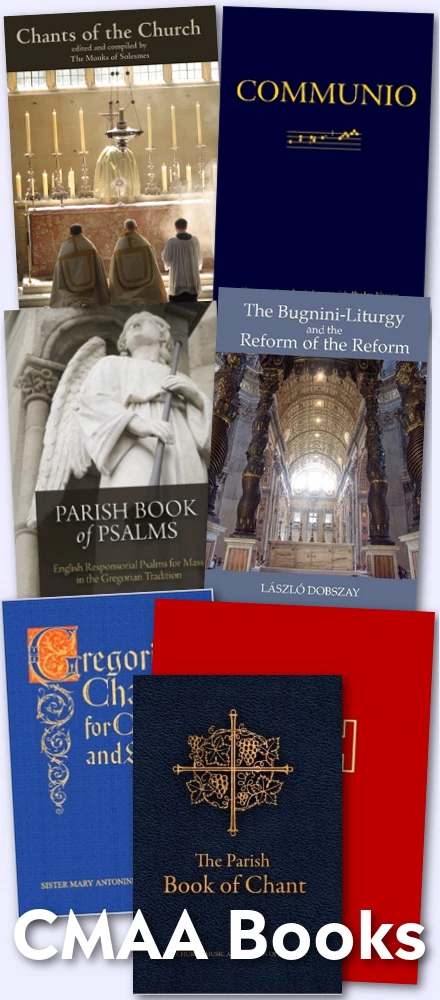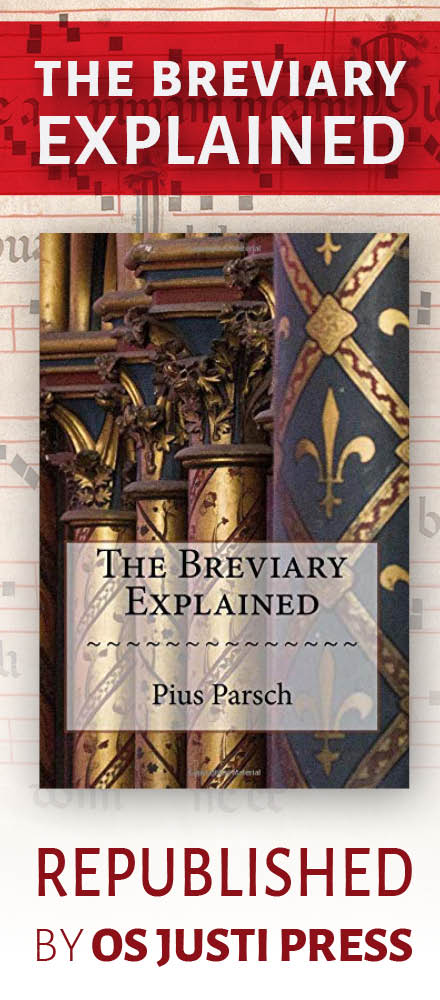In these days prior to the Motu Proprio, many people are busy – in a fin de siècle sort of way – sizing up the past and deciding who should be given credit for courage and steadfastness during the difficult decades following the close of the Second Vatican Council. It's true: the impending Motu Proprio invites us to take another look at those who refused to abandon the traditional Roman Rite, believing it to be the Mass of the Ages, and endured all the put downs and ecclesiastical ridicule for their fidelity. Sometimes adhering to truth requires even pushing around the edges of the legal norms, or taking activist risks to push those norms to comply with what is true. Many priests and laypeople took those risks to keep the old liturgy part of the ongoing history of Catholic life.
But we should also draw attention to a different kind of courage that we don't often hear celebrated: namely, those who complied with the changes as they took place following the Council and stuck to them all these years, even when they found the environment less than perfect, or even judged the new rite as it is ill-suited to the dignity of the liturgy. I'm thinking of a priest I know who winces at the new translations; you can see it in his face as he reads. But he obeys, endures, and keeps his complaints to himself as best he can.
Or there is another priest I know who adores chant and high ritual but found himself as an associate under an aging-hippy pastor who for years worked to stamp out anything distinctively Catholic or traditional at the parish. The young priest suffered in silence and always with genuine charity until he was finally made pastor of a parish across town. That exact scenario is repeated in dozens of cases I can think of.
Another priest I know is no fan of the new rite as it is but took risks with the diocese to put an altar rail in his parish: and earned the wrath of bureaucrats at the chancery. He defended the legitimacy of the rail against all attacks, and the people backed him. The rail survives, but he has been punished through a whispering campaign that encourages others to look down on him and keep their distance.
Or another who suffers miserably at the hearing of pop music but endured it at his parish for a decade because he was not in a position to stop it. Or another who was ordered from parish to parish throughout his diocese because the Bishop suspected that he was secretly converting parishioners to orthodoxy. Still another was actually silenced by his order but believes himself called to be there, so he doesn't budge. He serves as best as he is able.
There are hundreds of stories like this, people who complied, obeyed, and stuck it out for years, promoting the faith in the best way they could but always within the norms and in the context of an unfriendly diocesan culture. Isn't this a kind of heroism too? I've heard it said among monks that poverty and chastity are the easiest part of vows; it’s the vow to obedience that is the most difficult. So it must be.
I genuinely admire the priests who have stayed on the path within the norms all these years, while knowing it was imperfect. Some of them have suffered terribly. The new Catholic liturgical culture that is emerging – with the Motu Proprio and the new translations coming from the ICEL, together with the extraordinary influence of Benedict XVI – will make their lives easier. They aren't as likely to be regarded as odd balls. It's good to remember that resistance isn't the only path to heroism. Obedience can be the most difficult path of all.
Thursday, May 24, 2007
A Different Kind of Heroic Priest
Jeffrey TuckerMore recent articles:
Letter to a Maximalist Music Director in a Minimalist WorldPeter Kwasniewski
Auguste Danse, Study of Three Singers (detail)The following is based on a real letter.Dear Friend,I’m sorry to hear that you’re experiencing some “ups and downs” with regard to the liturgy there, though it’s hardly surprising in a way. Your diocese is not well known for liturgical propriety or taste, and, beyond that, priests mostly have control ov...
The Tomb of St Peter Martyr in Milan’s Portinari ChapelGregory DiPippo
Here are some great photos from our Ambrosian correspondent Nicola de’ Grandi of the Portinari Chapel at the Basilica of St Eustorgio in Milan. They were taken during a special night-time opening made possible by a new lighting system; as one might well imagine, the Italians are extraordinarily good at this sort of thing, and more and more museum...
Recommended Art History and Artistic Practice Text Books for Homeschoolers... and Everyone Else Too!David Clayton
I want to recommend the Catholic Heritage Currricula texts books to all who are looking for materials for courses in art history, art theory and artistic practice at the middle-school or high-school level. These books present a curriculum that combines art history, art theory, and a theory of culture in a Catholic way. Furthermore, they provide the...
Launching “Theological Classics”: Newman on the Virgin Mary, St Vincent on Novelty & Heresy, Guardini on Sacred SignsPeter Kwasniewski
At a time of turmoil, nothing could be better or more important than rooting ourselves more deeply in the Catholic tradition. One of my favorite quotations is by St. Prosper of Aquitaine (390-455), writing in his own age of chaos: “Even if the wounds of this shattered world enmesh you, and the sea in turmoil bears you along in but one surviving shi...
Low Sunday 2025Gregory DiPippo
With his inquisitive right hand, Thomas searched out Thy life-bestowing side, O Christ God; for when Thou didst enter while the doors were shut, he cried out to Thee with the rest of the Apostles: Thou art my Lord and my God. (The Kontakion of St Thomas Sunday at Matins in the Byzantine Rite.)Who preserved the disciple’s hand unburnt when he drew n...
The Easter Sequence Laudes SalvatoriGregory DiPippo
The traditional sequence for Easter, Victimae Paschali laudes, is rightly regarded as one of the greatest gems of medieval liturgical poetry, such that it was even accepted by the Missal of the Roman Curia, which had only four sequences, a tradition which passed into the Missal of St Pius V. But of course, sequences as a liturgical genre were extre...
The Paschal Stichera of the Byzantine Rite in EnglishGregory DiPippo
One of the most magnificent features of the Byzantine Rite is a group of hymns known as the Paschal stichera. These are sung at Orthros and Vespers each day of Bright Week, as the Easter octave is called, and thenceforth on the Sundays of the Easter season, and on the Leave-taking of Easter, the day before the Ascension. As with all things Byzantin...
Medieval Vespers of EasterGregory DiPippo
In the Breviary of St Pius V, Vespers of Easter Sunday and the days within the octave present only one peculiarity, namely, that the Chapter and Hymn are replaced by the words of Psalm 117, “Haec dies quam fecit Dominus; exsultemus et laetemur in ea. – This is the day that the Lord has made; let us be glad and rejoice therein.” In the Office, this...
Summer Graduate-Level Sacred Music Study - Tuition-freeJennifer Donelson-Nowicka
The May 1st application deadline is approaching for summer graduate courses in sacred music at the Catholic Institute of Sacred Music. Graduate-level study structured for busy schedulesIn-person, intensive course formatsAffordable room & boardFree tuitionLearn more and apply here.Courses:Choral InstituteComposition SeminarOrgan ImprovisationIn...
The Last Service of EasterGregory DiPippo
Following up on Monday’s post about the service known as the Paschal Hour in Byzantine Rite, here is the text of another special rite, which is done after Vespers on Easter day itself. It is brief enough to show the whole of it with just one photograph from the Pentecostarion, the service book which contains all the proper texts of the Easter seaso...




















